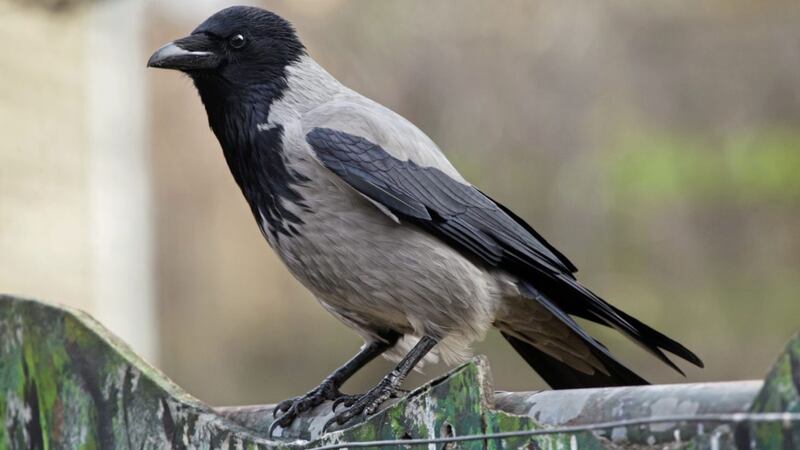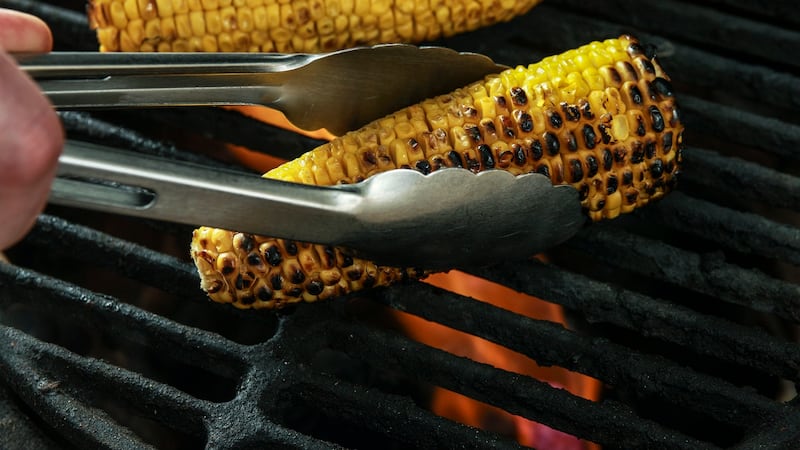THE presence of three Hooded crows squabbling over a pilfered heel of bread in my local Church grounds brought to mind recent conversations with two former teachers from my secondary school days.
‘Hoodies’ as they are known, are large members of the crow or corvid family, longstanding enemies of the sheep farmer because of their predation on lambing flocks and scavenging nature.
Kennedy, Ruttledge and Scroope in Birds of Ireland (1954), said of the bird, "Where its numbers are not kept in check the bird increases rapidly, so that it becomes a menace to the breeding colonies of terns, gulls as well as to nesting duck, game and other birds."
Corvus cornix is largely grey apart from its black head or ‘hood’, wings and tail and is closely related to the all-black carrion crow found in England, Wales and the Scottish Lowlands, but generally absent from here. Names used for the bird in Ireland include scald crow, grey crow and Royston crow from the English town Royston in Hertfordshire where the birds were once common.
Hooded crows, with their familiar croaky voice, are found in a wide variety of habitats from open country, rocky crags and coastal cliffs, to woodlands, upland areas and our towns. They eat almost anything – their diet including insects, molluscs, other invertebrates, birds’ eggs, and carrion.
‘Master’ Pat, a local playwright and historian of note, and ‘Master’ John, a scholar of words and Gaelic football, are both keen observers of their immediate natural environs, the grey crow the latest life form to attract their attention.
Pat shared his amusement at watching local rooks close to his home in spring, gathering to collectively reprimand a hoodie coming over the hill from a neighbouring townland, probably with plundering intent. John too, was curiously engaged by hooded crows stabbing the soil with their dagger-like beaks in search of worms and grubs, in the shadow of his adjacent rookery.
Corvids are known to be remarkably intelligent birds, possessing scientifically proven ‘self-awareness’, tool-making abilities and the capability to problem solve when finding food. Hooded crows in Finland have been observed ‘reeling in’ fishing lines left unattended in ice-holes, to acquire the fish before fishermen return.
The bird has also been seen in Irish coastal areas collecting mussels and other shellfish before carrying them to a height and dropping them on to the rocks, to crack the shells and expose the tasty flesh. They are also considered to make good pets if found at a young age.
Fergus Kelly in his book Early Irish Farming (1997) says that young crows can be easily reared as pets, writing, "They are particularly intelligent birds and adapt readily to domestication."
Mention is made in old Brehon Law texts of the requirement to keep pet crows on a string. The bird is also found in Irish lore and legend, mainly as a symbol of death and bloodshed, often associated with the goddesses of war. The trio of fearsome Celtic sisters, known as the Morrigan (or Morrigna) appear frequently in Irish myth helping warriors in battle, sometimes taking on the shape of a crow to instil fear in their enemies.
Described as ‘the battle crow’ the Morrigan famously offers help to Cúchulainn in the legend The Cattle Raid of Cooley.
Despite relentless persecution by shooting and trapping for centuries, the hooded crow population remains strong and its adaptability means it will continue to remain part of our natural landscape.
Thanks, Pat and John for sharing your observations on an Caróg liath and for your nurturing in those important school years.








